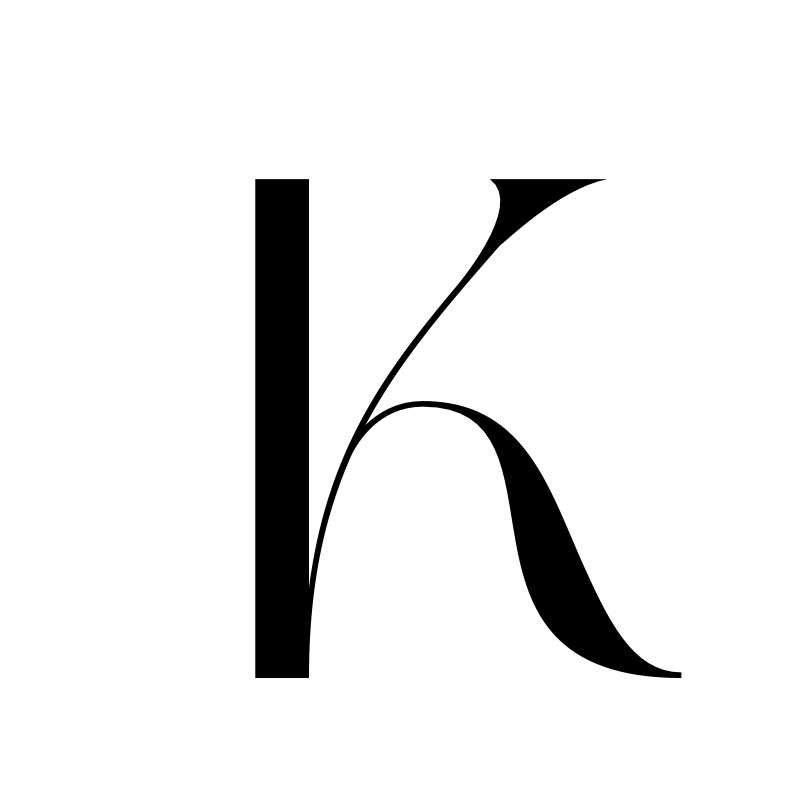In the vibrant world of Caribbean fashion, innovation and sustainability often intertwine seamlessly, shaping the narrative of each designer’s collection with a distinct voice. Jeremy Payne, the Vincentian visionary behind the brand Fashion is Payne, is no stranger to collections built on the principles of sustainability. In his latest collection, aptly named ‘No Man’s Land’, Payne immerses himself in the essence of the nomadic lifestyle, expertly weaving the signature style of his brand into a fresh canvas of exploration, where sustainability seamlessly merges with style.
‘No Man’s Land’ elevates the concept of patchwork, incorporating knits like jersey and Lycra to craft bespoke, one-of-a-kind pieces. Payne’s narrative unfolds gracefully, portraying the resilience of individuals who fashion beauty from scant resources but also of individuals who aim to take up space in unchartered territory. In a nod to the brand’s history, fabric cascade necklaces from 2016 and Play Pouches from 2021 make a triumphant return, adding to the eccentric allure of Payne’s concept.
We sat down with Jeremy for a quick chat about his new collection, his brand’s sustainability thrust and why it was important to have a conversation about turning scarcity into style.
What inspired you to name this collection ‘No Man’s Land’?
JP: With every collection I present there is always an emotional concept at the helm. This collection was motivated by the idea of taking up space in the landscapes that life throws us into. Taking up and carving out space in uninhabited and novel territory.
What are the brand’s codes and how did you incorporate them into the design elements of this collection?
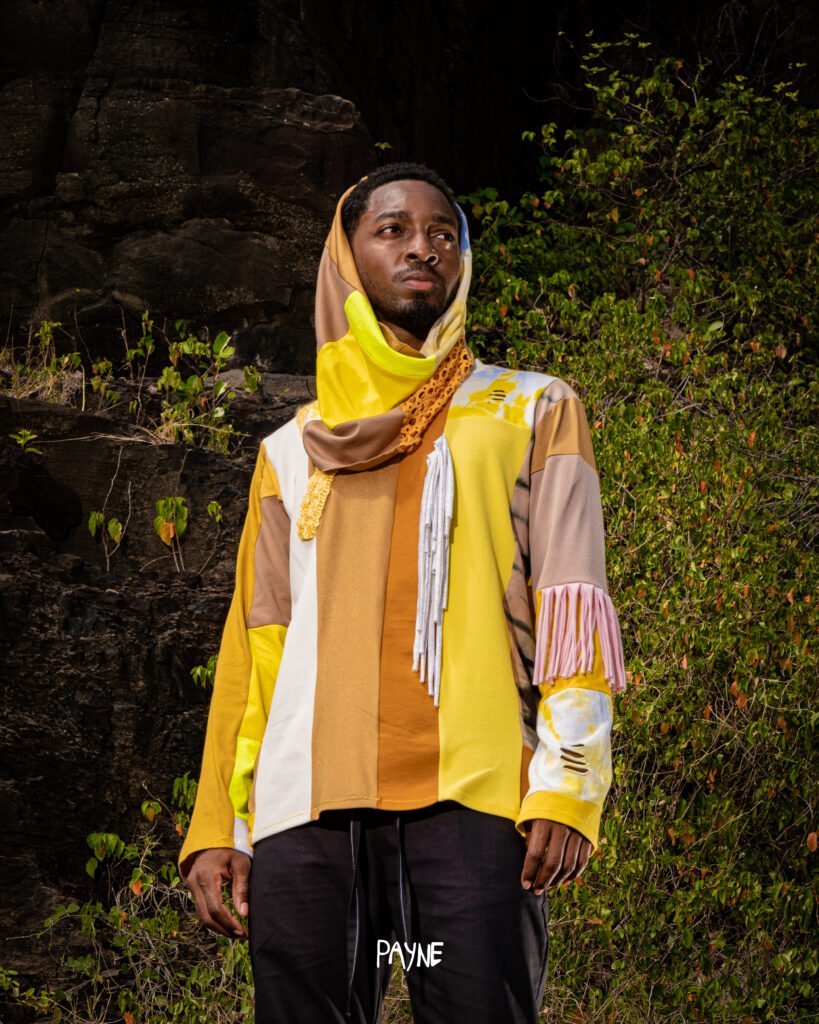
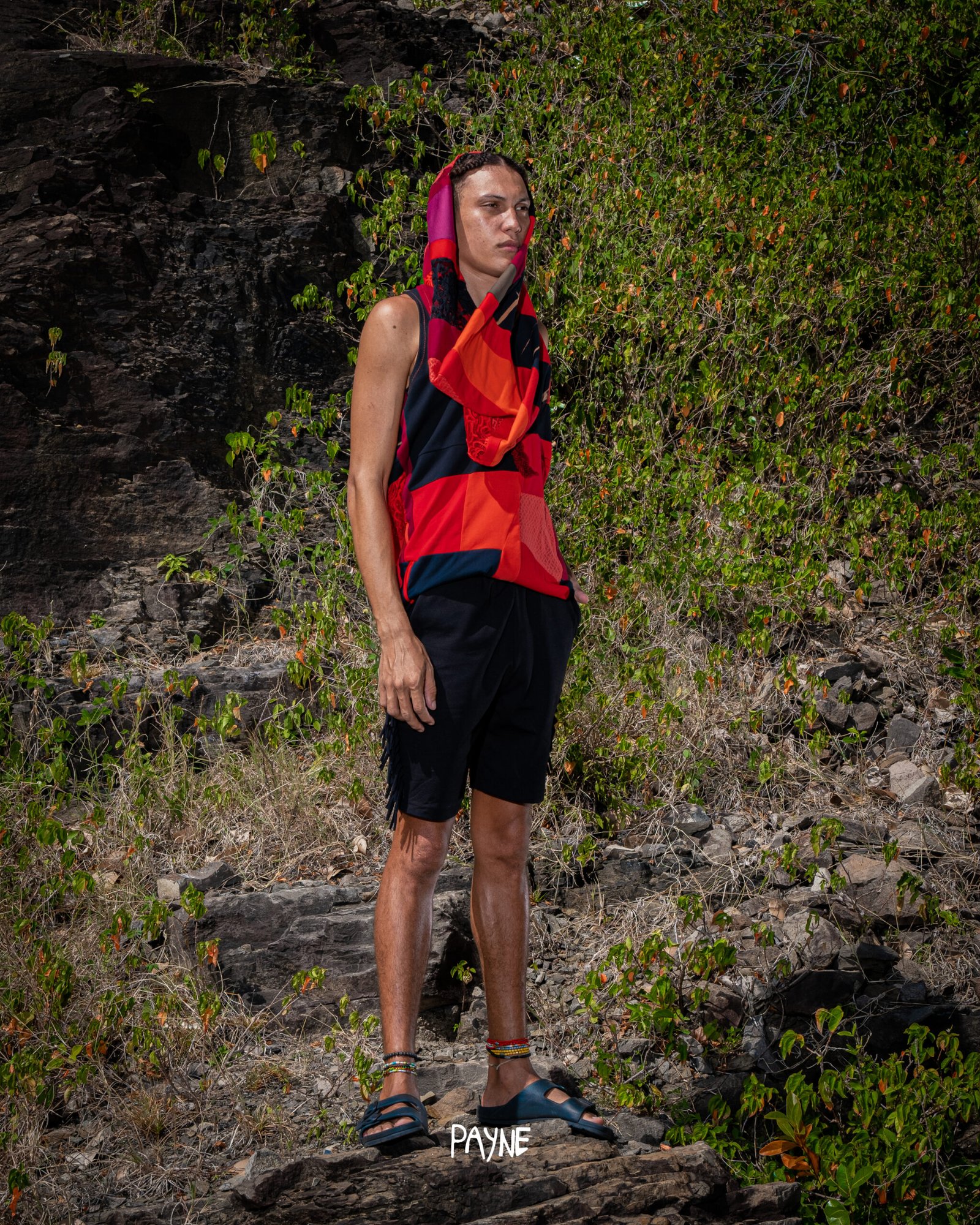
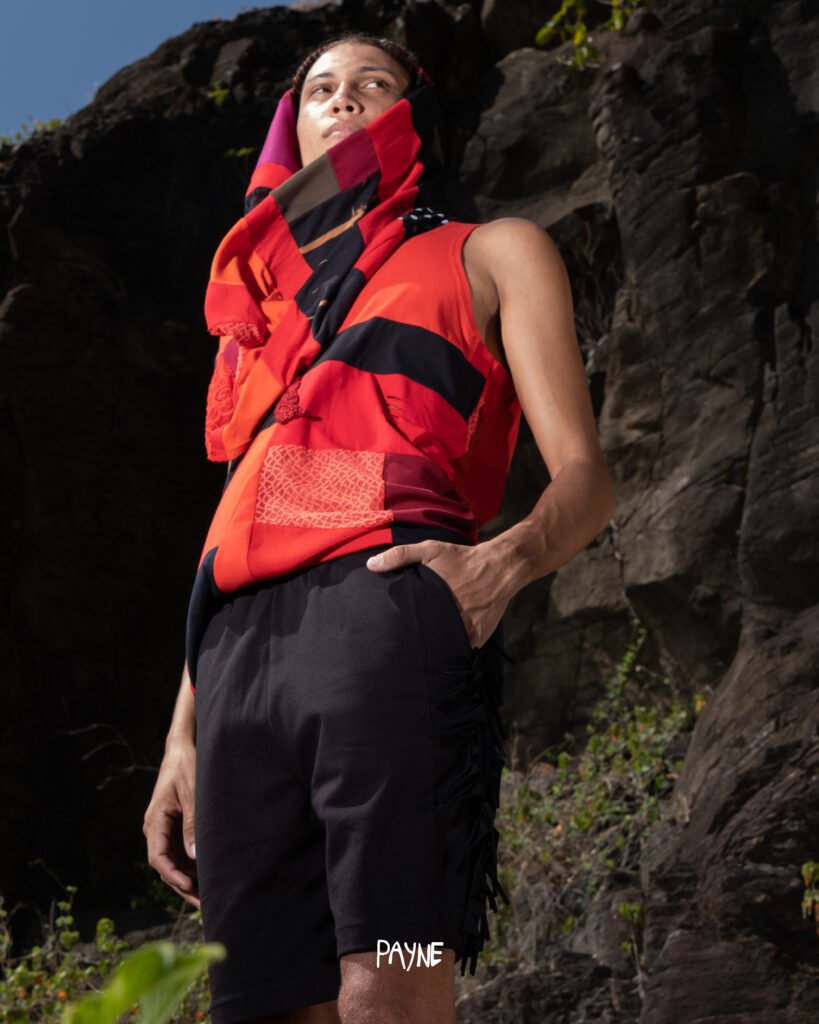
JP: For this collection, we focused on further developing our connection with sustainability through the continuity of patchwork, creating full garments by breaking down pieces of fabric to make new textiles that we then cut into. We also continued working with cotton and softer stretch fabrics like jersey throughout the collection to maintain not only the urban island feel of the brand but also the functionality of each garment.
Tell us more about the patchwork technique used in this collection. How does it contribute to sustainability?
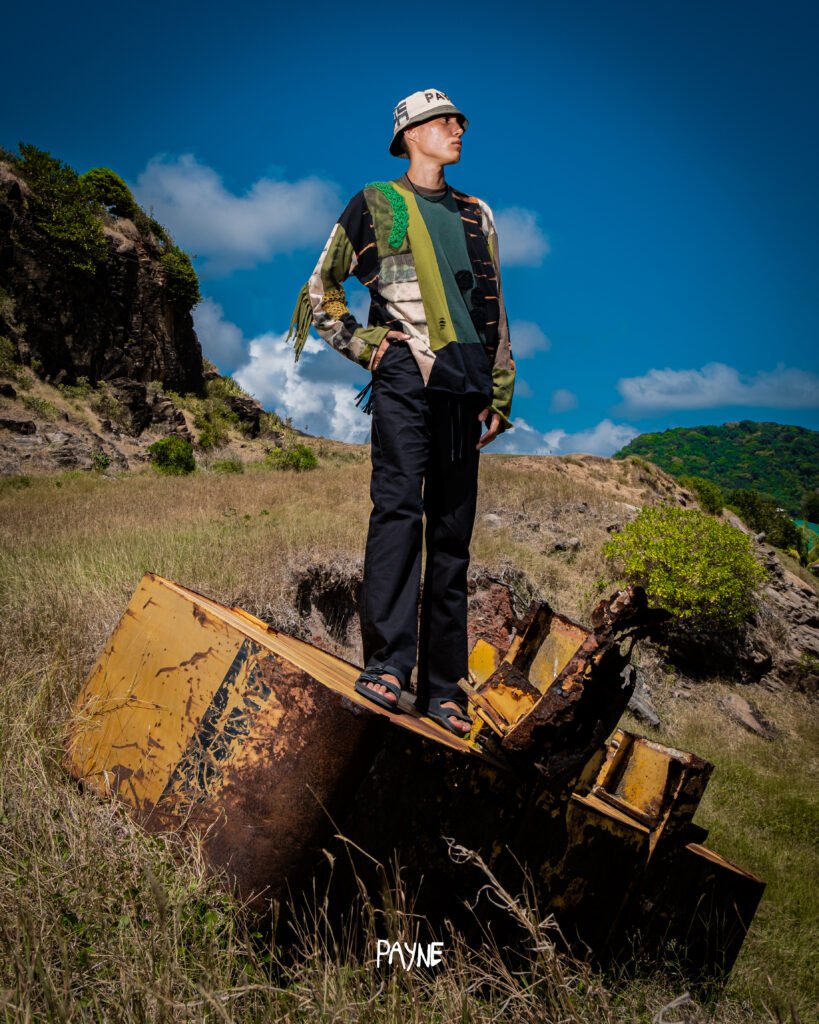
JP: I introduced patchwork initially in 2020 with the ‘Daydream’ collection. We use a mixture of shreds and pre-loved fabrics to create individualized textiles that we can then work with as yardage for new garments. I do not consider myself a wasteful person & apart from my awareness of the fashion industry being one of the world’s largest pollutants, I am also mindful that wasting quality material can easily be considered a sacrilege. I’ve slowly integrated techniques that allow us to decrease our wastage in the day-to-day operations at the PAYNE studio.
Why did you choose knits like Jersey and Lycra for these one-of-one pieces?
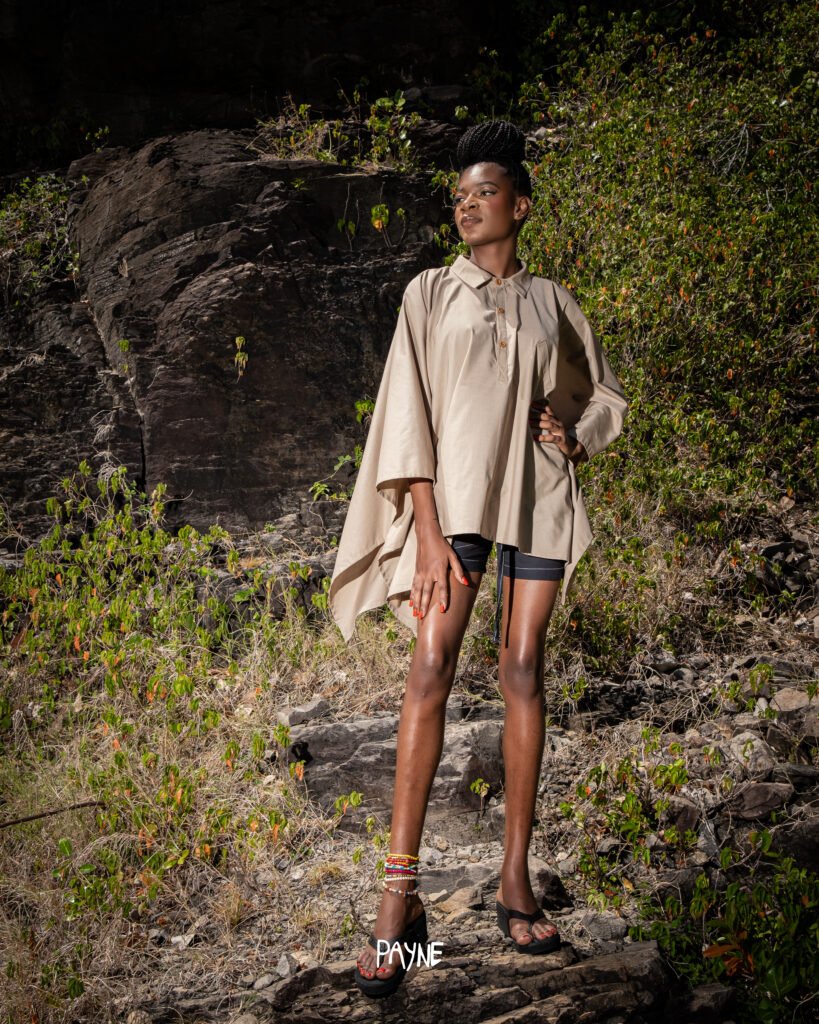
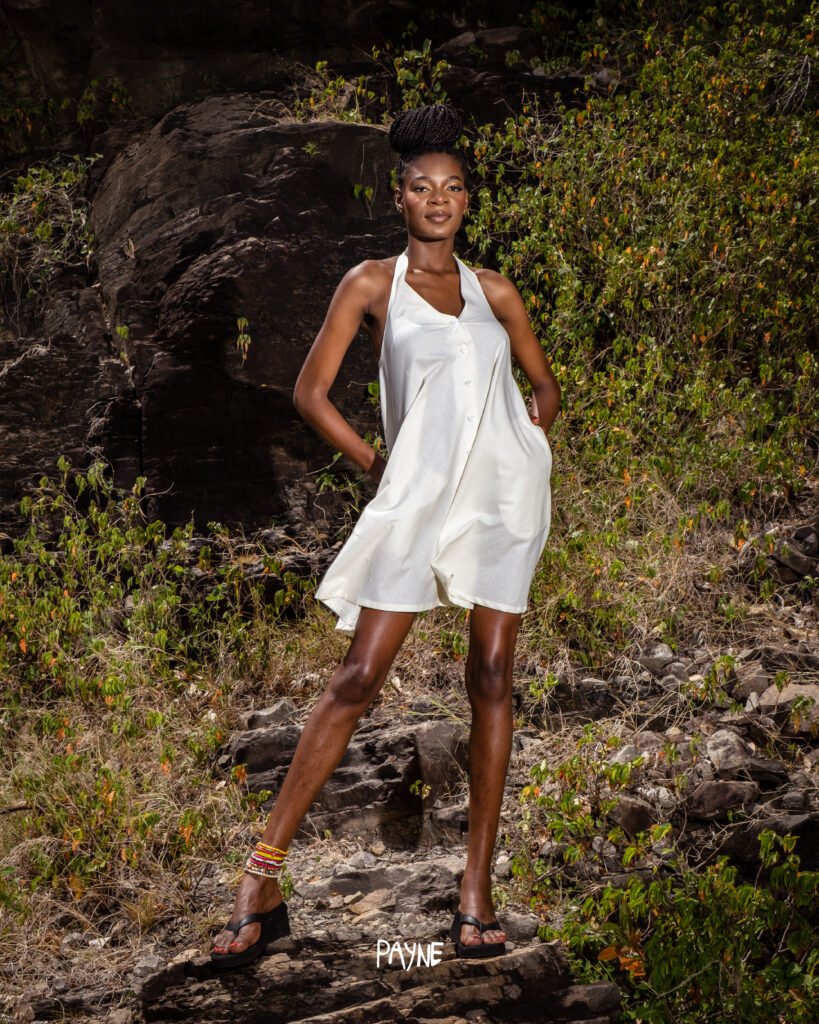
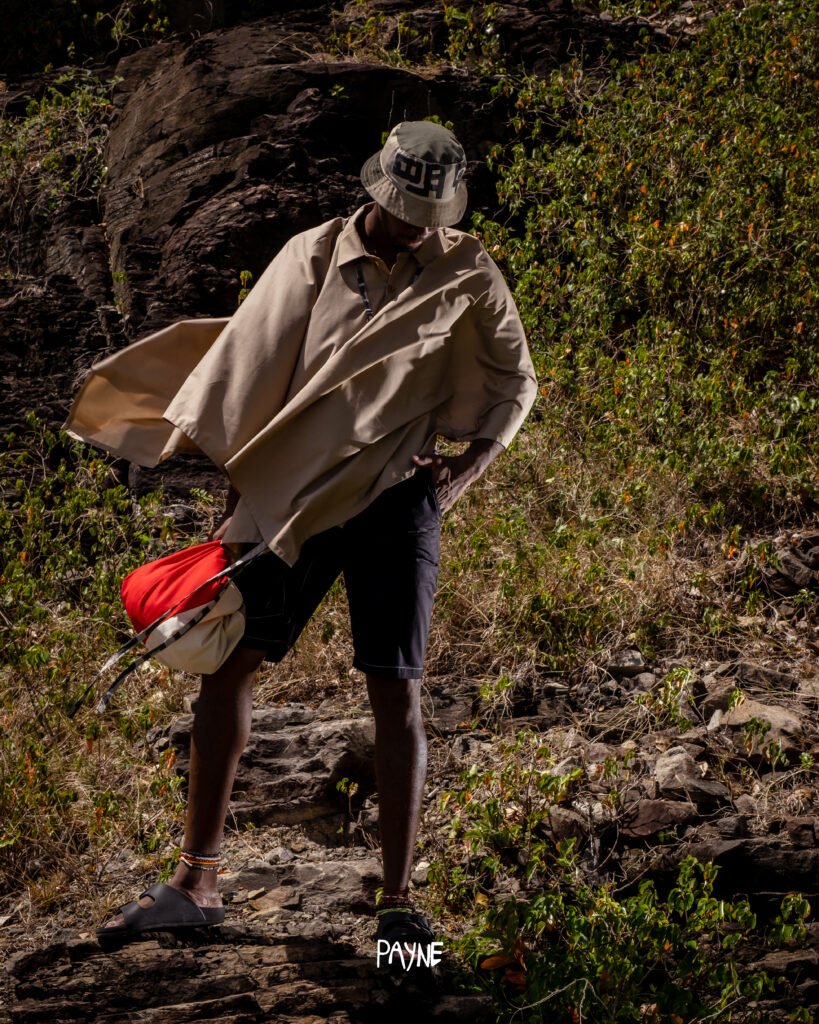
JP: Designing the collection with a sustainable approach in mind, one of the key factors attributed to the process was finding ways to utilize the fabrics that we have on hand & having them dictate the direction of the collection. We just so happened to have a small stash of knits that were untapped & sought to use them in this collection to add the sportswear street element that we like so much. I like working with breathable fabrics like cotton & jersey to combat our humid climates, but they also help to add extra ease to us moving through life with grace.
The narrative of someone using what little they have to clothe themselves is powerful. How did you translate this concept into fashionable pieces? What is the creative process of turning scarcity into style like?
It’s all part of the sustainable effort & giving a second chance or new life to what once was. This idea of using a few of your old items, piecing them together & creating something beauty-full. A lot of the fabrics that we use in the patchwork pieces are high-quality fabrics I’ve consumed & cherished over years of working on special projects. Mostly fabrics that we no longer have access to. As a creative, you become very aware of your extended environment & how easily people lose everything. I cannot take for granted my connection to textiles & the great blessing to simply ‘own’.
The return of fabric cascade necklaces from 2016 and Play Pouches from 2021 adds continuity to the brand. How do these accessories complement the collection? What is their role in enhancing the overall aesthetic of FIP?
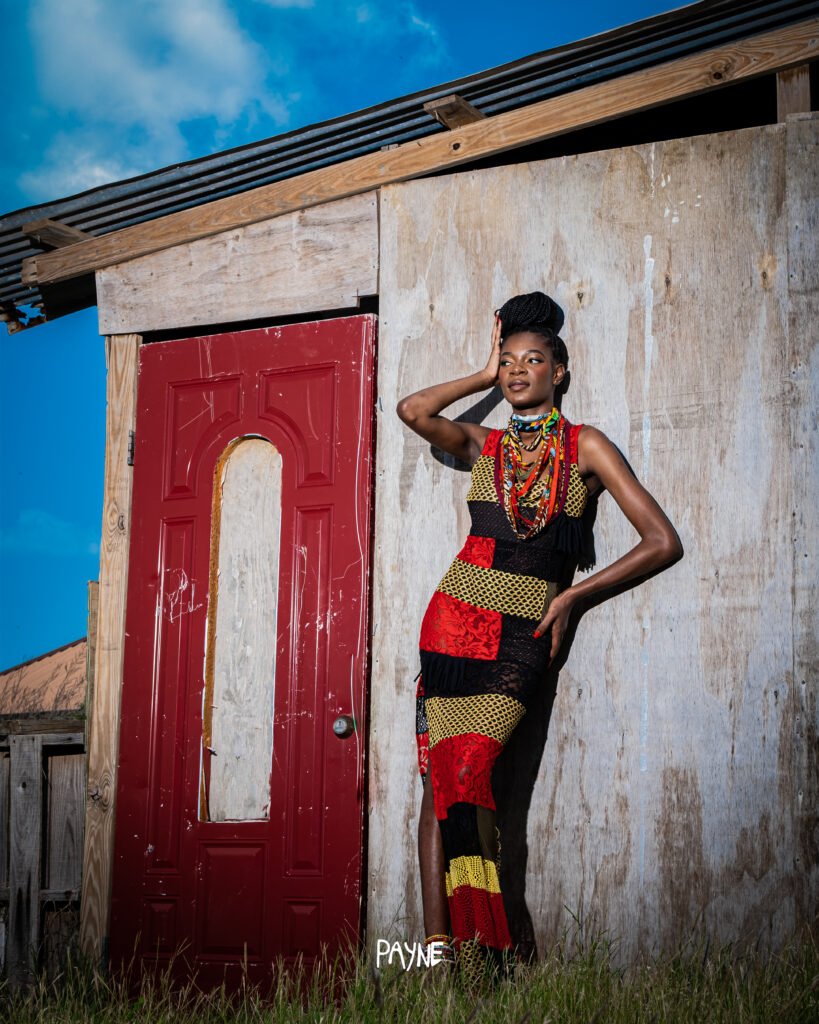
I’m very lucky to be able to take inspiration from the PAYNE archives. A decade of references to learn from & build on. Building on the narrative of these humble nomads, their accessories are made of textiles & not precious jewels. Their pouches always hold sacred items close to their body. Both the necklaces & pouches make good use of the shreds of fabric. They also add great texture & detail to the solid clothing in the place of our hand-painted graphics.
What classic versatile pieces did you create, and how can they be styled in different ways? (How can customers mix and match these pieces?)
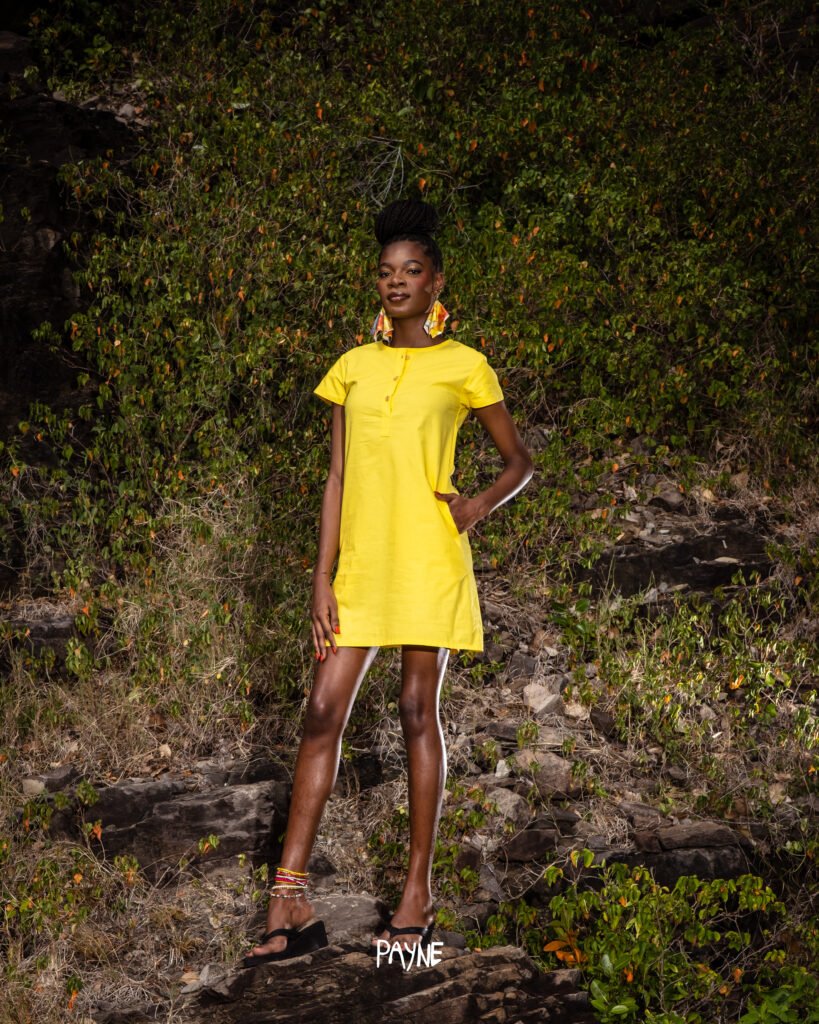
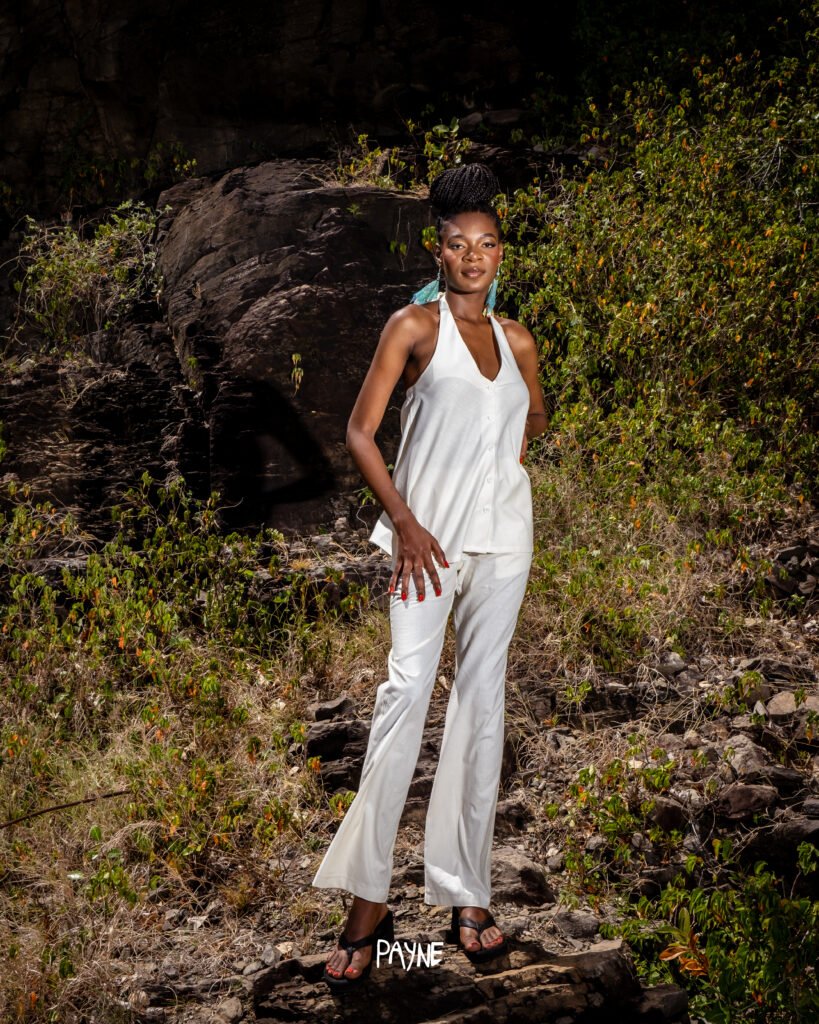
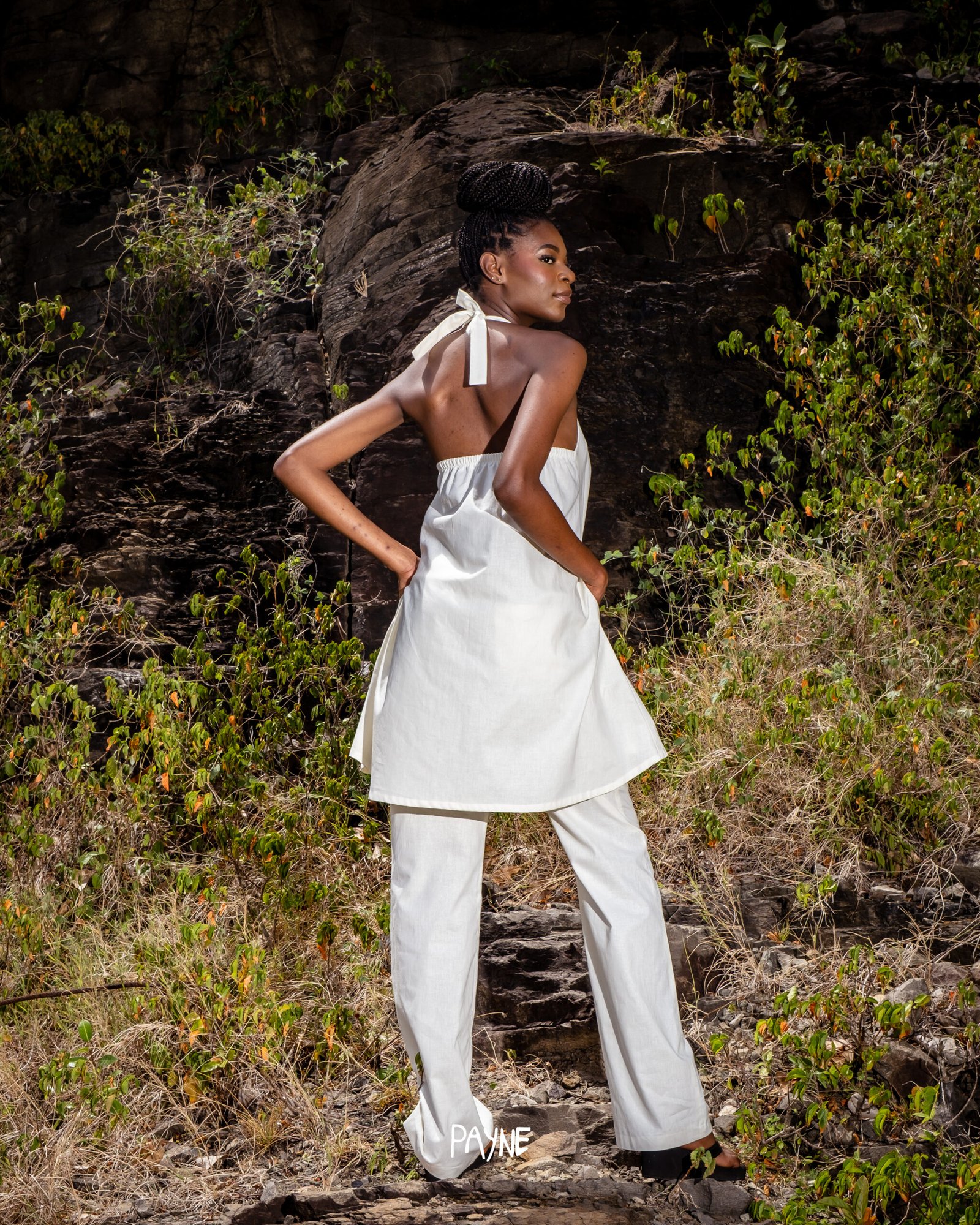
Functionality & versatility are big design factors at PAYNE. Our A-line Dress, usually done in cotton or linen, is a staple in our customers’ wardrobes & every year we find ways to reinvent it. For this collection, we’ve done a version in a saturated canary yellow with a half-button placket & lined the sleeves to add more structure. I am always thinking of the PAYNE gal & how easily she can wear her A-line dress with sneakers or flats, a tote bag & sunnies to run errands in the city during the day & just as easily switch her flats out for a pair of heels & an evening bag to enjoy a restaurant dinner on the waterfront, palm trees included. Our Flirt Dress offers the same sentiments in this collection with a halter version that we now pair with matching trousers for a 2-piece set and the half button placket shirt has also become a staple for the guys.
In your opinion, what makes a fashion piece truly sustainable?
I think it starts with the intention & understanding of the impact of fashion on our environment. It may differ for each brand but generally, a sustainable piece of apparel is created with the sensibilities of the world & its social issues, manufactured in no less than ethical conditions with quality materials by Fairly paid artisans, not causing harm to the environment nor its wearer and outlives the life span of trends to be worn repeatedly for many years.
How do you envision your customers incorporating these pieces into their wardrobes over time?
I’m overjoyed to see some of my customers passing their PAYNE gear down to their daughters & other family members after years of ownership. I am always inspired to see how they wear the pieces over the years & how different age groups style them for every event from birthdays to weddings, grocery shopping to travelling on vacation.
What’s next for Fashion is Payne after ‘No Man’s Land’? Any hints about future projects or themes?
We are definitely looking at collaborations & making a bigger impact in representing where we are from in reference to the global market. More Art, more culture.
Connect with Fashion is Payne on their website and at @fashionispayne on all social media platforms.
